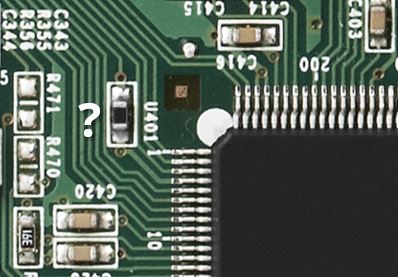EMC Question of the Week: October 18, 2021

A 3-Mbps clock signal is transmitted to a 5-pF load on a 15-cm microstrip trace. The trace capacitance is 10 pF. The clock source resistance is 2 Ω. Which component should be placed in series with the clock output to reduce unwanted power in the upper harmonic frequencies?
- a 0-Ω resistor
- a 1-kΩ resistor
- a 10-kΩ resistor
- a ferrite
Answer
The best answer is “b.” With no series resistance, the transition time is nominally 2.2 x 2Ω x 15pF = 66 ps. This is much faster than necessary and the signal has significant harmonic content at frequencies above 30 MHz. A 1-kΩ resistor increases the transition time to 33 ns. This is one tenth of the bit width and fast enough to produce a good-looking signal with no ringing.
A 0-Ω resistor is worse than no component at all. The connection inductance (a couple nanohenries) would likely cause the circuit to ring given the low resistance of the source. A 10-kΩ resistor would make the transition time equal to the bit-width, destroying the signal integrity.
Finally, ferrites should (almost) never be used to control the transition time with a capacitive load. Their impact on the transition time is difficult to predict and they can actually contribute to ringing if their inductive reactance is greater than their resistance at the ringing frequency. Ferrites are also larger and more expensive than the resistors they would replace for this purpose.
Have a comment or question regarding this solution? We'd like to hear from you. Email us at
